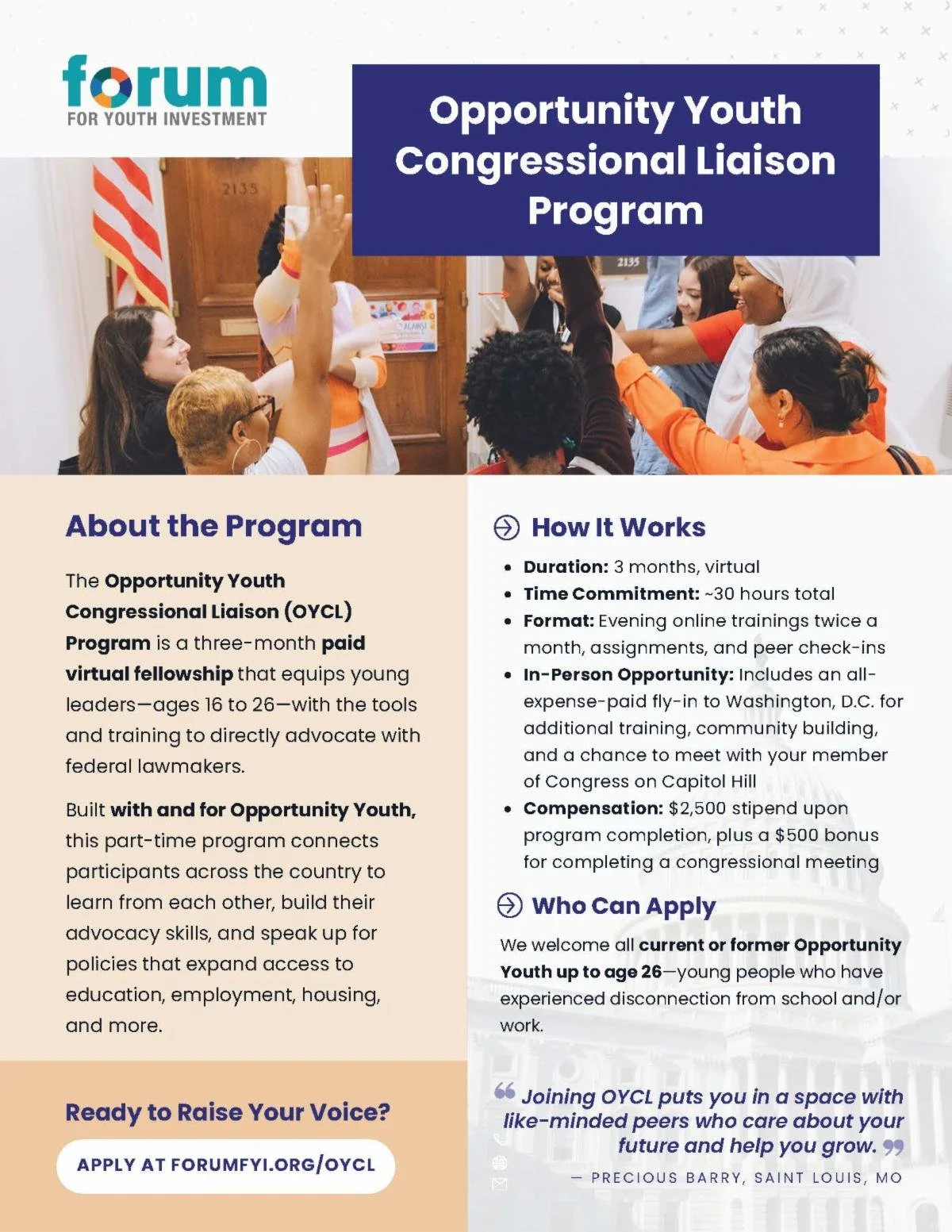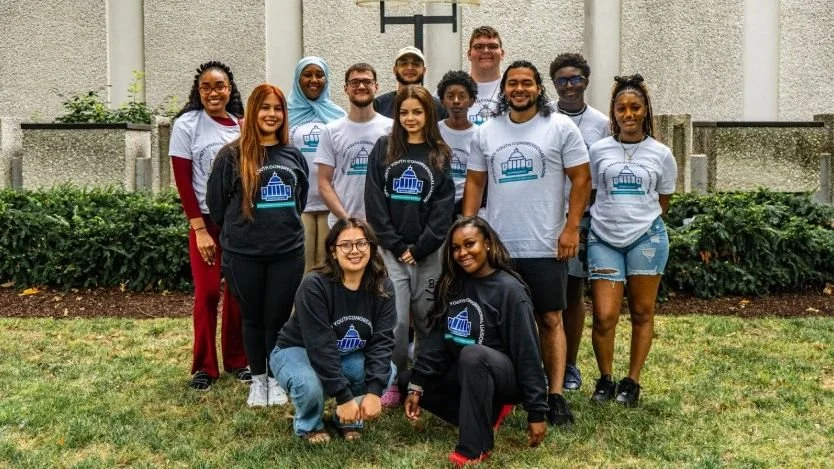Nov 5 Newsletter — Day 36 of a Government Shutdown
Let’s Catch Up
The federal government is on its 36th day of a shutdown, surpassing the longest shutdown in history of 35 days during President Trump’s first term in office. The House is currently on recess and Congress is no closer to passing a funding bill than it was on September 30th.
On November 1 millions of Americans will feel the effects of the government shutdown if they haven’t already.
About 42 million people are at risk of not receiving Supplemental Nutrition Assistance Program (SNAP) benefits, leaving them unable to purchase food. As of now, 25 states and Washington, DC are actively suing the Administration over the lack of contingency funds for SNAP. Over the weekend, a federal judge ruled that the Administration must resume distribution of SNAP benefits. The U.S. Department of Agriculture (USDA) responded that half of needed SNAP payments will be distributed using emergency funds. As of now, the second half of the money will not be payed.
Head Start programs, which serve nearly 65 million children, are at risk of closing because funds are not coming through. At the start of this week some of the centers have already closed.
Americans enrolling in health care plans during the open enrollment period will see higher premiums.
There are discussions in the Senate of combining multiple appropriations bills and passing continuing resolutions (CRs) that may go into January. A possibility here is the Labor, Health and Human Services, Education, and Related Agencies (Labor-HHS-ED) will go into a package with the Defense funding bill.
In the second week of the shutdown, the Administration announced a Reduction in Force (RIF) for over 450 employees at the U.S. Department of Education (ED) and thousands more across other agencies. The mass firings essentially dissolved ED’s Offices of Elementary and Secondary Education and Special Education Programs. As it currently stands, a judge ordered the firing to be temporarily halted and required additional information from each agency be provided. This week a federal judge continued this ruling, and the Administration cannot do a RIF while the government is shut down. The approximately 465 ED staffers who lost their jobs at the beginning of the month most likely still have those jobs but are currently furloughed due to the shutdown.
At the same time, ED is moving forward with some of its priorities. On Thursday ED released its final rule on Public Student Loan Forgiveness (PSLF). The new rule amends the definition of “qualifying employer” to exclude any that “have a substantial illegal purpose.” In practice, this could include organizations that support immigrants, transgender youth, and more. The statement from the National Association of Financial Aid Administrators (NASFAA) provides additional information. This week the department is also continuing it's negotiated rulemaking for a variety of student loan programs with the next meeting of the Reimagining and Improving Student Education (RISE) Committee.
When the federal government shut down on October 1, the ripple effects quickly reached the programs that reconnect young people to education, training, and work. We know that reconnection for Opportunity Youth requires reliable funding, purposeful policy, and sustained momentum. In this moment, that foundation is under even more strain than usual.
Already, youth workforce funding is at risk. Programs under WIOA Youth, YouthBuild, and related support depend on federal dollars that, in a shutdown, cannot be newly obligated. That means local providers, many of which operate on razor-thin margins, face delayed reimbursements and paused grant renewals. Young people waiting to enter training or employment may find slots shrinking or programs deferred, not because need has diminished, but because money is trapped in gridlock.
Even the most promising and bipartisan policy areas, like youth apprenticeships, feel frozen. Agencies managing apprenticeship grants and technical support were forced to reduce their capacity; new competitive grants are postponed; evaluation and reporting take a backseat. In the early childhood field, for example, apprenticeships designed to build a pipeline of skilled caregivers rely on both program funding and employer contributions. But when federal oversight ebbs, these models are harder to sustain.
As these disruptions mount, the risks cascade. Young people who are making steady progress in education attainment and workforce development programs may lose access to training, mentorship, or placement support.
This shutdown is not just a pause in government operations in DC; it’s a test of how durable our commitments to Opportunity Youth truly are. When funding freezes, policy reform halts, innovation becomes impossible, and the young people seeking economic mobility are among the first to feel the consequences. We at RYC believe reconnection cannot wait. The systems that support youth must be resilient, even when politics aren’t. Their future should not depend on the timing of a budget deal.
Follow along with real-time updates on the government shutdown from The Corps Network (TCN).
Opportunity Youth Congressional Liaison Update: OYCL Cohort 4 Application Is Live
The Opportunity Youth Congressional Liaison Program (OYCL) is a three-month paid fellowship for youth ages 16 to 26 to equip them with the skills and tools they need to directly advocate to lawmakers. Congressional Liaisons will join virtual trainings, participate in short assignments and check-ins, and share their experiences with each other as they learn to be advocates for themselves and their communities, speaking up on behalf of Opportunity Youth to hold politicians accountable to the communities they serve.
Learn more and access the application here.
OYCL Cohort 4 Information Session Recording
Finding My Voice: What the OYCL Program Taught Me About Advocacy and Connection
At the end of July, the Forum for Youth Investment’s Opportunity Youth Congressional Liaison cohort traveled to DC to meet their members of Congress and directly engage in advocacy.
Hear from program member Jasalyn Franco about her experience.
From Saint Louis to Capitol Hill, I’m Raising My Voice for Change
Precious Barry describes her participation in the Opportunity Youth Congressional Liaison Program in Washington, D.C., where she met with legislators, learned about power and community organizing, and represented young people from often-overlooked neighborhoods. She returns home energized and determined to ensure that youth voices are not just heard but centered in policy decisions.
Resource Center
Economic Bill of RYTS (Real Youth Troubles & Solutions)
MyPath's Youth Economic Bill of RYTS (Real Youth Troubles and Solutions) is a document created by and for youth that identifies the most pressing financial issues young people around the country face and offers policy-based youth-centered solutions. The current version was created in 2019 and reflects the needs of youth navigating a global pandemic. The current 2025-2026 POWER Leaders cohort is working to 'refresh' the document to reflect the current realities and needs of young people. As the group creates a first draft, we want to gather input from as many voices and policy perspectives as possible. We invite you to review the current Bill of RYTS and share your feedback- what feels most relevant, what may be missing, and what should be reconsidered as we shape the next iteration of this important youth-centered policy tool.
Career Pathways to Success: Supporting Young Adults in Education and Employment
The Anne E. Casey Foundation invests in efforts to equip OY with the skills, credentials, and experiences needed to prepare for placement in their first job, gain experience, and grow their careers. This report highlights key strategies that Casey and its partners have implemented to help young people navigate transitions from school to work.
A Message from The Corps Network’s Government Relations Team: Planning for Government Shutdown
This blog from The Corps Network (TCN) will be updated in real time to share new information about the government shutdown, impacts on programs, and what to expect next.
Please fill out this action alert from Young Invincibles to tell Congress to extend the Enhanced Premium Tax Credits.
What You Need to Know About a Federal Government Shutdown
The National Network for Youth (NN4Y) outlines how a government shutdown will impact youth homelessness programs and shares links to additional resources on the shutdown.
Monthly Opportunity Youth Policy Stakeholders Meeting
For all those with important perspectives to share and a willingness to engage in federal advocacy and implementation, but for whom weekly meetings would be overkill, we will host monthly meetings that cover the content from both meetings above (advocacy and implementation), briefing participants on key developments, soliciting views and priorities, and providing meaningful opportunities to engage. These meetings are designed particularly for organizations whose work is not primarily federal advocacy, but whose voices are critical to ensure federal efforts meet their needs, for example, Aspen Opportunity Youth Forum sites, LEAP sites, and NLC Reengagement Network participants.
Meetings are held on the last Monday of each month at 4pm (EST). Register here.
Connect With Us On LinkedIn!
The Reconnecting Youth Campaign is on LinkedIn! Give us a follow to keep up with news and resources, and message us if there’s a post you’d like amplified.
Get These Updates in Your Inbox
We send a few emails like this each month with information and resources you need to advocate for Opportunity Youth. Sign up below to get these directly to your inbox!



